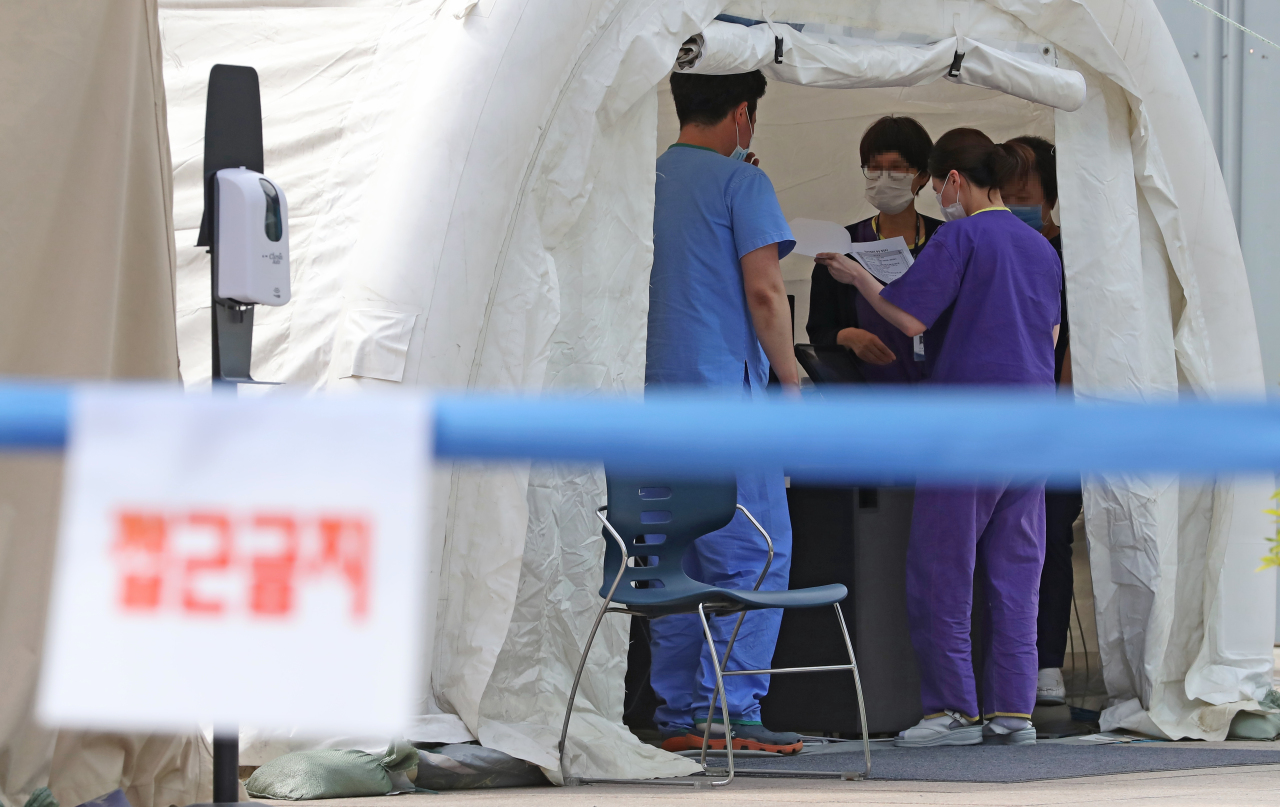‘Nightclub outbreak smaller than February peak’: KCDC
Schools to reopen Wednesday as planned
By Kim ArinPublished : May 17, 2020 - 11:55

A new flare-up of infections that emerged from Itaewon, a neighborhood in central Seoul known for its nightlife, is not likely to turn into “the next big wave,” according to experts at the Korea Centers for Disease Control and Prevention on Sunday.
South Korea reported 13 more patients with COVID-19 -- the respiratory illness caused by the novel coronavirus -- on Sunday, bringing the nationwide total to 11,050. Only five of the newly confirmed patients were linked to night spots at the Seoul district, said the KCDC’s director Jung Eun-kyeong.
“While the Itaewon outbreak is not projected to become as explosive as a peak witnessed in February, the situation is still far from reassuring,” she said.
In less than two weeks since a 29-year-old man was the first to be identified as an infected nightclubgoer on May 6, at least 168 people with Itaewon ties have tested positive, threatening to upend Korea’s stabilizing virus trend.
After the daily number of new cases peaked at 909 on Feb. 29, Korea managed to suppress its curve through over a monthlong practice of stringent physical distancing.
In light of the recent safety breaches, Jung cautioned against decreasing compliance with coronavirus precautions.
“When visiting settings where close contact is unavoidable, keep at least 2 meters apart, wear face masks, avoid touching your face and follow strict hygiene rules,” she said. “If you are over 65, pregnant or immunocompromised, avoid crowds and poorly ventilated spaces.”
In a Sunday briefing, Health Minister Park Neung-hoo said that the government conducted ambush on-site inspections at 9,000 nightlife establishments on Saturday, to find that 6,800 were complying with the shutdown order. Thirteen of the businesses that were continuing operations illicitly were given administrative penalties, he said.
Park had said the previous day that false statements to epidemiological investigators and noncompliance with health orders were among the major obstacles faced by authorities, who are “in a race against time to contain the virus.”
“Approximately 40 percent of patients associated with the cluster in Itaewon passed on the virus to their family and others in their community,” he said, speaking to reporters at a government complex building in Seoul.
“Adhering to the public health requirements is not a choice but a duty for all members of society,” he said, adding that individual instances of noncompliance could imperil the safety of the whole country.
Health officials said some 2,000 out of over 7,000 who partied with the infected individuals still remain unreachable.
In a desperate bid to prompt the thousands of people who have potentially had virus exposure to get tested, Prime Minister Chung Sye-kyun said testing would be implemented under a no-questions-asked policy, pleading for cooperation with health authorities from the contact dodgers.
Despite the grim outlook, the disease control agency’s Deputy Director Kwon Jun-wook said in a Saturday press briefing that the fresh outbreak “does not appear to be spiraling out of control.”
He said between May 6 and Saturday, some 46,000 people have been tested for the virus in the Itaewon investigation alone, but that the number of positive cases has not escalated dramatically yet.
A senior Education Ministry official announced Sunday that high school seniors will be returning to classrooms Wednesday as planned. Disrupting the academic calendar further was no longer deemed possible as it could “let years of hard work go to waste for the students.”
All members of the faculty and the student body who have visited the nightclubs in question between April 24 and May 6 are strongly urged to seek testing, he said.
The latest KCDC data show Korea has tested 747,653 people so far.
No deaths linked to the novel coronavirus occurred during the 24 hours of the previous day. 262 people have lost their lives to the virus, with the fatality rate here standing at 2.3 percent.
The number of patients released from isolation after making a full recovery is 9,888. The remaining 900 are undergoing treatment at hospitals and treatment centers.
“This virus can slip back into our lives through moments of complacency, however brief,” said Kwon of the KCDC, adding that “unceasing vigilance” was required in the “inconvenient coexistence with the coronavirus.”
By Kim Arin (arin@heraldcorp.com)




![[Herald Interview] 'Amid aging population, Korea to invite more young professionals from overseas'](http://res.heraldm.com/phpwas/restmb_idxmake.php?idx=644&simg=/content/image/2024/04/24/20240424050844_0.jpg&u=20240424200058)













![[KH Explains] Korean shipbuilding stocks rally: Real growth or bubble?](http://res.heraldm.com/phpwas/restmb_idxmake.php?idx=652&simg=/content/image/2024/04/25/20240425050656_0.jpg&u=)

